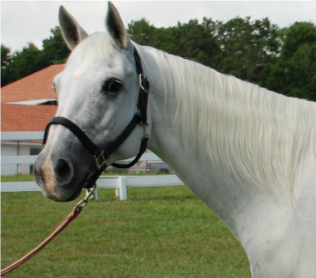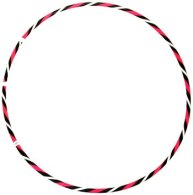Connie is a beautiful, 25-year old American Quarter Horse mare. To look at her, you wouldn’t recognize her as a 1200-lb training prop. This is because lovely, gentle Connie has a mind of her own.

What I learned at my second session at Crossroads Corral has stayed with me all week. I thought I’d write about it.
When I arrived at the stable, my therapists, Lindsay and Kathy, walked me over to a pasture where several horses were grazing lazily. They told me to pick any horse out of the pasture to work with for the session. Connie happened to be the closest horse, so I slipped on her halter and led her to another dirt-filled corral. I could feel Connie had a gentle spirit, but she was wise in the ways you are when you’re getting close to end-of-life. I enjoyed petting her, talking to her, and just appreciating her majestic beauty.
Kathy motioned to a pile of objects just outside the fence of the corral. She gave me explicit instructions:
“Use any of the objects in the pile to create an obstacle course for the horse to go over.”
In the pile of objects were styrofoam noodles (the kind you use in a pool or a lake), small beach pails, hula hoops, and a few long, hollowed out PVC pipes. I grabbed the easy stuff, and constructed an obstacle course I could easily lead the horse through, including a little “jump” I devised with two pails turned upside down supporting a noodle “rail.”
Spoiler alert: if you’re considering sessions with Crossroads Corral, stop reading here.
When I was done, I turned to my therapists and said, “Okay, I’m ready.”
Kathy then says to me,
“Okay, now take her halter off and lead the horse through the path – without touching her.”
WhaT? I thought to myself. You couldn’t have told me that FIRST? I felt a sense of betrayal and trickery, but put it out of my mind. Not a good first step toward building trust (which is kind of why I was coming to therapy). I realized that this was the lesson– seeing how I would perform in the face of an extremely difficult task.
But, how the hell was I going to bend this splendid animal to my will?
At first, I really tried– in good humor– joking with the horse, cajoling her, using the tools to get any reaction out of her, all the while feeling the uncomfortable internalization of humiliation, failure, and judgment at the same time. Connie was not responding enough to do what I wanted. At the back of my mind was a pragmatic assessment: “This is fucking impossible.”
Like most times in my life when something is particularly difficult, I then made the decision to “stop playing.” I shared with the therapists that from a very early age, I would not compete in games I could not win. And being even more truthful, I confided that many times in my life I could not afford to fail, intimating that this exercise was very stressful for me. I just wanted it to stop, and move on to the next thing.
We talked through those issues, but finally Kathy told me, sternly, yet patiently, “I’ve seen dozens of ways this can be done.” In other words, it was not impossible. That challenged me. I decided to try again. Lindsay piped in, “We’re on your team!”
What happened next I will never forget.
I started using the tools again and began focusing exclusively on the horse. Really focusing – in a kind of spiritual, at-one-with-the-universe, centered way. It’s hard to explain, but I lost myself in the task at hand with a blind ambition to work together with the horse to complete this preposterous feat.
First, my fear of failure fell away, then the pressure and presence of the therapists fell away, as I became entranced with moving, whirling, shaking the tools and watching the horse react and reading her the best I could. I remembered in the fog of this activity, the therapist had told me the obstacle course was of my own design. So, I changed the design. I reduced the course to one obstacle. I removed the noodle from the “jump,” yet felt it might just be possible I could actually get the horse to walk through the two pails. This seemed cognitively absurd, but I was in the zone. I kept trying.
fear of failure fell away, then the pressure and presence of the therapists fell away, as I became entranced with moving, whirling, shaking the tools and watching the horse react and reading her the best I could. I remembered in the fog of this activity, the therapist had told me the obstacle course was of my own design. So, I changed the design. I reduced the course to one obstacle. I removed the noodle from the “jump,” yet felt it might just be possible I could actually get the horse to walk through the two pails. This seemed cognitively absurd, but I was in the zone. I kept trying.
And then, just moments later… she walked through the pails. It was like magic.
Squeeee!
I couldn’t believe it!
I felt like I had just won the Triple Crown with Connie.
All that self-doubt, including the arrogance I brought to the lesson by simply stating the task was impossible, made me inventory and examine all the feelings that surrounded the process of working through the assignment. It taught me not only not to give up on myself, but not to discount the holistic forces that can come together to make something seemingly inconceivable happen.
Wow.

